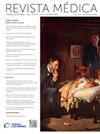Módulo de promoción del uso responsable de antimicrobianos en odontología: diseño instruccional guiado por la teoría de carga cognitiva
IF 0.4
Q4 MEDICINE, GENERAL & INTERNAL
引用次数: 0
Abstract
Introduction
Aproximately 30% to 50% of annual antimicrobial prescriptions are inappropriate or unnecessary, enhancing the development of bacterial resistance. It has been proposed that the responsible use of antimicrobials in undergraduate programs be emphasized. However, teachers usually do not manage effective strategies for this purpose.
Aims
1. Develop an instructional design, guided by the cognitive load theory, of a teaching and learning module to promote responsible use of antimicrobials 2. Evaluate the educational impact of the module on third-year Dental students.
Methods
Action research and mixed methodology in four phases. i. Identification of learning needs and outcomes; ii. Instructional design guided by cognitive load theory; iii. Module implementation; iv. Educational impact on students was evaluated using satisfaction surveys, self-reports of learning outcomes achievement and a pre-post knowledge test. Descriptive and analytical statistical analysis (Wilcoxon test) and qualitative content analysis were used.
Results
The antimicrobial module was designed in Canvas (LMS), allocating protected time for study and a classroom session. The educational impact was evaluated in 48 students. The satisfaction survey reported positive results on their 10 items (minimum 81.3%). The results of the self-reports of achievement of 7 learning outcomes and the pre-post test of 18 questions were statistically significant (p < 0.001).
Conclusions
The design of this module could serve as a guide to promote the responsible use of antimicrobials while achieving greater satisfaction with students’ experience and learning outcomes.
促进在牙科负责任地使用抗菌药的模块:以认知负荷理论为指导的教学设计
导言每年约有 30% 至 50% 的抗菌药物处方是不恰当或不必要的,从而加剧了细菌耐药性的发展。有人建议在本科课程中强调负责任地使用抗菌药物。然而,教师通常没有为此制定有效的策略。以认知负荷理论为指导,开发一个教学模块的教学设计,以促进负责任地使用抗菌素 2.评估该模块对牙科三年级学生的教育影响。方法行动研究和混合方法分为四个阶段:i. 确定学习需求和结果;ii. 以认知负荷理论为指导进行教学设计;iii.模块实施; iv.使用满意度调查、学习成果成就自我报告和前后知识测试评估对学生的教育影响。使用了描述性和分析性统计分析(Wilcoxon 检验)以及定性内容分析。对 48 名学生的教育效果进行了评估。满意度调查报告显示,10 个项目均取得了积极成果(最低 81.3%)。7项学习成果的自我报告结果和18个问题的前后测试结果均有统计学意义(p < 0.001)。结论该模块的设计可作为促进负责任地使用抗菌药物的指南,同时提高学生对学习体验和学习成果的满意度。
本文章由计算机程序翻译,如有差异,请以英文原文为准。
求助全文
约1分钟内获得全文
求助全文
来源期刊

Revista Medica Clinica Las Condes
MEDICINE, GENERAL & INTERNAL-
CiteScore
0.80
自引率
0.00%
发文量
65
审稿时长
81 days
 求助内容:
求助内容: 应助结果提醒方式:
应助结果提醒方式:


